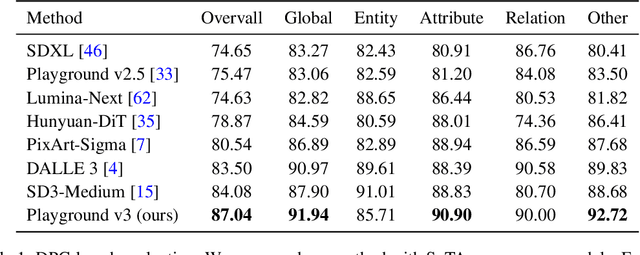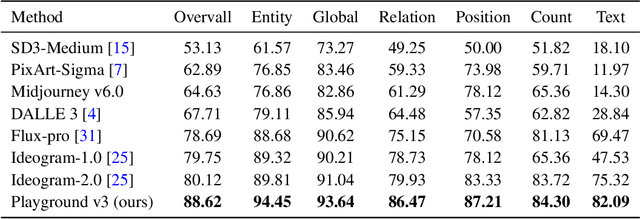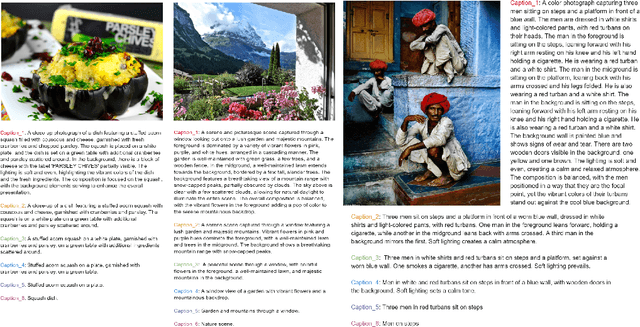Linmiao Xu
Playground v3: Improving Text-to-Image Alignment with Deep-Fusion Large Language Models
Sep 16, 2024



Abstract:We introduce Playground v3 (PGv3), our latest text-to-image model that achieves state-of-the-art (SoTA) performance across multiple testing benchmarks, excels in graphic design abilities and introduces new capabilities. Unlike traditional text-to-image generative models that rely on pre-trained language models like T5 or CLIP text encoders, our approach fully integrates Large Language Models (LLMs) with a novel structure that leverages text conditions exclusively from a decoder-only LLM. Additionally, to enhance image captioning quality-we developed an in-house captioner, capable of generating captions with varying levels of detail, enriching the diversity of text structures. We also introduce a new benchmark CapsBench to evaluate detailed image captioning performance. Experimental results demonstrate that PGv3 excels in text prompt adherence, complex reasoning, and accurate text rendering. User preference studies indicate the super-human graphic design ability of our model for common design applications, such as stickers, posters, and logo designs. Furthermore, PGv3 introduces new capabilities, including precise RGB color control and robust multilingual understanding.
Playground v2.5: Three Insights towards Enhancing Aesthetic Quality in Text-to-Image Generation
Feb 27, 2024Abstract:In this work, we share three insights for achieving state-of-the-art aesthetic quality in text-to-image generative models. We focus on three critical aspects for model improvement: enhancing color and contrast, improving generation across multiple aspect ratios, and improving human-centric fine details. First, we delve into the significance of the noise schedule in training a diffusion model, demonstrating its profound impact on realism and visual fidelity. Second, we address the challenge of accommodating various aspect ratios in image generation, emphasizing the importance of preparing a balanced bucketed dataset. Lastly, we investigate the crucial role of aligning model outputs with human preferences, ensuring that generated images resonate with human perceptual expectations. Through extensive analysis and experiments, Playground v2.5 demonstrates state-of-the-art performance in terms of aesthetic quality under various conditions and aspect ratios, outperforming both widely-used open-source models like SDXL and Playground v2, and closed-source commercial systems such as DALLE 3 and Midjourney v5.2. Our model is open-source, and we hope the development of Playground v2.5 provides valuable guidelines for researchers aiming to elevate the aesthetic quality of diffusion-based image generation models.
 Add to Chrome
Add to Chrome Add to Firefox
Add to Firefox Add to Edge
Add to Edge